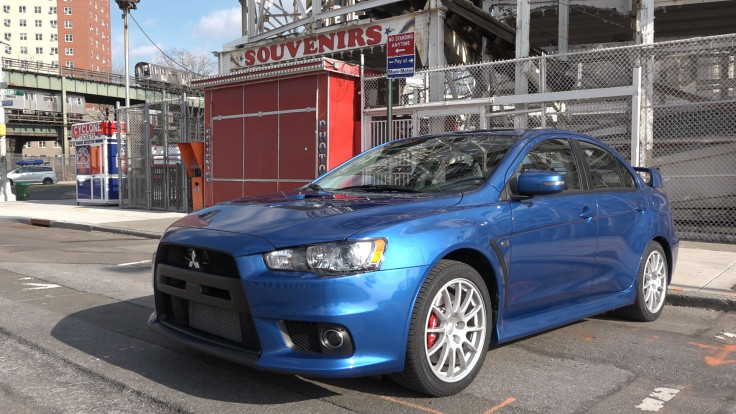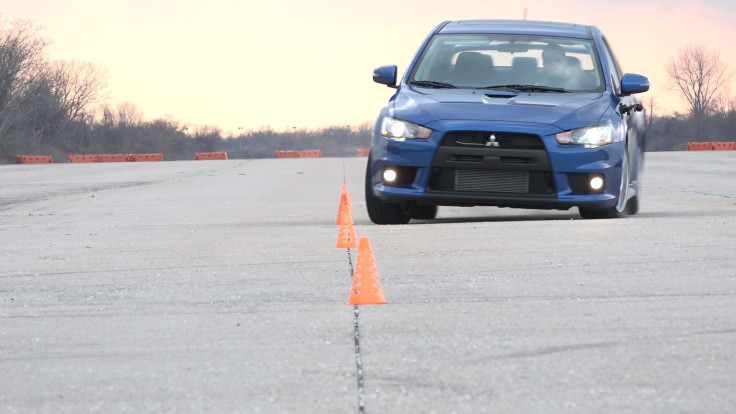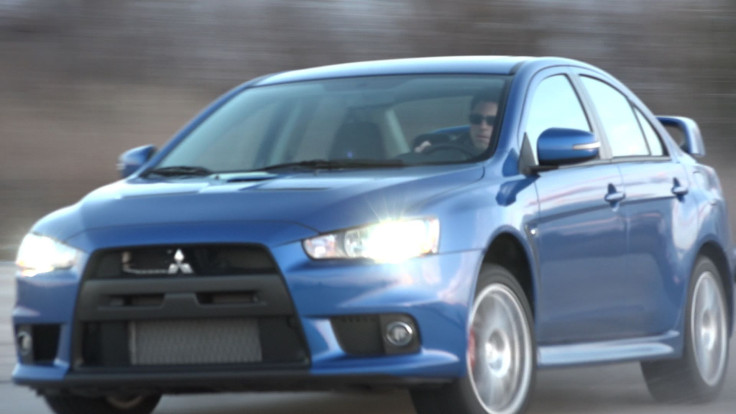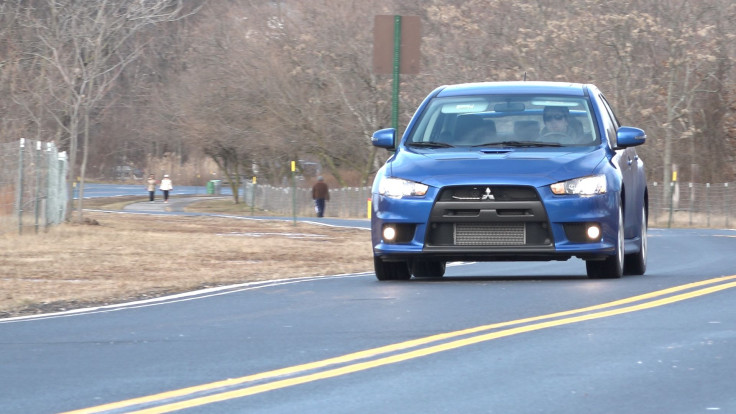2015 Mitsubishi Evolution X GSR Review: The Last Evo Is Still A Rally Star [VIDEO]

The Mitsubishi Lancer Evolution has been a staple of sports compact performance around the world since the early 1990s, but 2015 will be the last year for the turbocharged monster. Mitsubishi is ending production of the line after 23 years, despite enthusiastic demand for the car.
Considering Mitsubishi Motors’ drop in popularity over the past few years, this doesn’t come as a shock; Mitsubishi’s U.S. sales have shrunk considerably, so designing a new flagship performance car isn't fiscally responsible. The Evo X -- Mitsubishi’s 10th-generation Lancer Evolution -- is now 8 years old, and by today’s standards, rather poorly equipped. If those were the only factors determining a car’s value, the Evo X wouldn’t be worth mentioning.
But that is, and always was, the glory of the Lancer Evolution -- it was never a car you bought because you were financially responsible. You bought it because it was fun, because it could take on (and in certain guises, embarrass) far more prestigious vehicles. Although the 2015 model is based on old architecture, with an engine and drivetrain largely similar to the 2003 Evo VII (the first offered in the U.S.), it’s still maniacally fun.

Even now, at the end of its life, the Evo X is just about the most fun car to drive hard out there (though the Fiesta ST gives it a good run) for me. There’s just something special about the car: The sound it makes, the way its peaky power band punches you in the chest, the cartoonish handling -- it’s so easy to drive it quickly, with a large margin for error. I’ve yet to find another car that can pull off the same ridiculous maneuvers an Evo can, though the upcoming Ford Focus RS has potential (as long as it’s actually all-wheel-drive).
The Evo X always pushes you to keep your foot down and take every corner sideways. Doing so is a laughably easy matter: Push the big “ESC off” button, and all of the electronic safety nannies disappear. Pitch the car into a corner at a moronic speed and angle and put your foot down -- the rear of the car will swing around and hold like it’s anchored to a sideways rail. In most other cars this would result in a big spin, but the Evo X just laughs. You can hold it sideways at 50 mph with one hand and a big smile on your face.

If you own one of these cars, you'll be up to no good -- there’s no way around it. The way it’s set up in GSR trim (with an eager, close-ratio 5-speed manual gearbox) forces you to drive one of two ways: ultra conservative (granny shifting, not double clutching like you should), which the car loathes, or ultra aggressive, which your local police department loathes. Guess which way you’ll be driving more often.
It’s an incredibly brutish car. Normal people won’t take you seriously if you drive one. It’s loud, unrefined, you’ll struggle to get 25 mpg, and the fuel tank is pitifully small. You could get more power from other cars, with more respected names, for less money. By logical lines of thought, the Evo is silly.
That perception won’t change when you see the interior, either -- though the X is better than its predecessors in this regard, it’s still not particularly great for $40K. It’s basically the same as a well-optioned, normal-economy Lancer; the 180 mph speedometer is about the only thing that might tip people off.

But these are the same things people said about the Evo when it first came to America. Surely, you might imagine Mitsubishi has changed something big over its time stateside. But you’d be wrong.
The basic recipe for the Evolution line has never deviated: Take a 2-liter, 4-cylinder motor, add a turbocharger, and throw in a super clever all-wheel-drive system. Race it around the world, then sell production versions to the public.
And for a while, this worked. Racing pedigree, combined with appearances in the pop-culture phenom “Fast & Furious” film series helped spark a loyal fanbase for the brand in the USA. Mitsubishi constantly battled Subaru’s WRX and STi models for supremacy both on and off tracks. Life was good.
But in recent years, while Subaru has expanded its lineup and found sales success, Mitsubishi has languished and consolidated (down to three main lines in the USA, none of which are competitive). So while the WRX/STi has at least incrementally changed over the past decade, the Evo has remained the same. The competition as we know it is over. Until someone else steps up, Subaru is the only one continuing to sell turbocharged, all-wheel-drive rally cars.

So, can I recommend buying a Mitsubishi Evolution now? The Evo X is, objectively, not a very good car; it doesn’t like daily commutes, it drinks more gas than a V8 Mustang, its interior is worse than a $25K Focus ST.
But I’ve yet to find something that makes me feel the same way as one of these. It’s not a smart decision to make, but I couldn’t fault anyone for buying one of the last Evos. In time, they might even become collectors' cars.
Mitsubishi has talked about reviving the nameplate eventually as an electric hybrid, which, given the company’s success in the electric/plug-in markets, would make sense. But it wouldn’t be the same kind of car, even if it shared the name.

This is the kind of Evo people will remember.
© Copyright IBTimes 2024. All rights reserved.





















